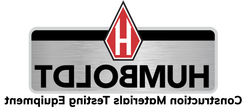
H-4200.XX
洪堡 Pocket Penetrometer (Tire Gauge Design)
Verifies whether excavation walls require shoring, based on OSHA cohesive soils classifications.

H-4195
土壤渗透计,袖珍式
F或使用 by field personnel to check visual classification of soils.

H-4200F
Penetrometer, Low-Strength Soil Adapter Foot (Tire Gauge Design)
Adapter foot is recommended when testing extremely low strength cohesive soils.

H-4205
土壤穿透计,表盘式
A dial pocket penetrometer offering greater capacity and sensitivity than others.

H-4195F
插入计适配器脚
Adapter foot is recommended when testing extremely low strength cohesive soils.
透度计,口袋里
洪堡's pocket penetrometers for soil is used by field personnel to check visual classification of soils. 袖珍穿透仪, or hand penetrometer can be used to make quick estimates of unconfined compressive strength of cohesive soils, 特别是在现场应用中.
袖珍穿透仪 can quickly verify whether excavation side walls require shoring, based on OSHA cohesive soils classifications. The penetrometer indicates consistency, shear strength, and approximate unconfined shear strength. It has a direct-reading scale—in tons/sq ft, 或者千克/平方厘米, which corresponds to equivalent unconfined compressive strength. The range of this penetrometer is: 0 to 4.5吨. It features high-quality construction and includes a belt-loop style carrying case and operating instructions. While the pocket penetrometer is a great tool for fast evaluations of soil in the field, it should not be used to replace laboratory testing or field analysis, or be used to produce foundation design data.
在使用, the pocket penetrometer's penetration piston is pushed into the soil surface to a calibration groove machined into the piston at 0.25" (6.距离末端4mm). The resistance of a calibrated internal spring registers the penetration force on an engraved scale.
When used on-site f或使用 in OSHA soil classification applications the following soil categories would apply.
OSHA土壤分类
OSHA categorizes soil and rock deposits into four types, A through D, as follows:
Stable Rock: is natural solid mineral matter that can be excavated with vertical sides and remain intact while exposed. It is usually identified by a rock name such as granite or sandstone. Determining whether a deposit is of this type may be difficult unless it is known whether cracks exist and whether or not the cracks run into or away from the excavation.
Type A Soils: are cohesive soils with an unconfined compressive strength of 1.5吨 per square foot (tsf) (144 kPa) or greater. Examples of Type A cohesive soils are often: clay, 粉质粘土, 砂质粘土, 粘土壤土和, 在某些情况下, silty 粘土壤土和 砂质粘土 loam. (No soil is Type A if it is fissured, is subject to vibration of any type, 之前被打扰过, 部分是倾斜的吗, layered system where the layers dip into the excavation on a slope of 4 horizontal to 1 vertical (4H:1V) or greater, 或者有渗水.
Type B Soils: are cohesive soils with an unconfined compressive strength greater than 0.5tsf (48kpa)但小于1.5tsf (144kpa). Examples of other Type B soils are: angular gravel; silt; silt loam; previously disturbed soils unless otherwise classified as Type C; soils that meet the unconfined compressive strength or cementation requirements of Type A soils but are fissured or subject to vibration; dry unstable rock; and layered systems sloping into the trench at a slope less than 4H:1V (only if the material would be classified as a Type B soil).
Type C Soils: are cohesive soils with an unconfined compressive strength of 0.小于等于5tsf (48kpa). Other Type C soils include granular soils such as gravel, 沙和壤土沙, 淹没的土壤, soil from which water is freely seeping, and submerged rock that is not stable. Also included in this classification is material in a sloped, layered system where the layers dip into the excavation or have a slope of four horizontal to one vertical (4H:1V) or greater.
Layered Geological Strata: Where soils are configured in layers, i.e., where a layered geologic structure exists, the soil must be classified on the basis of the soil classification of the weakest soil layer. Each layer may be classified individually if a more stable layer lies below a less stable layer, i.e., where a Type C soil rests on top of stable rock.

